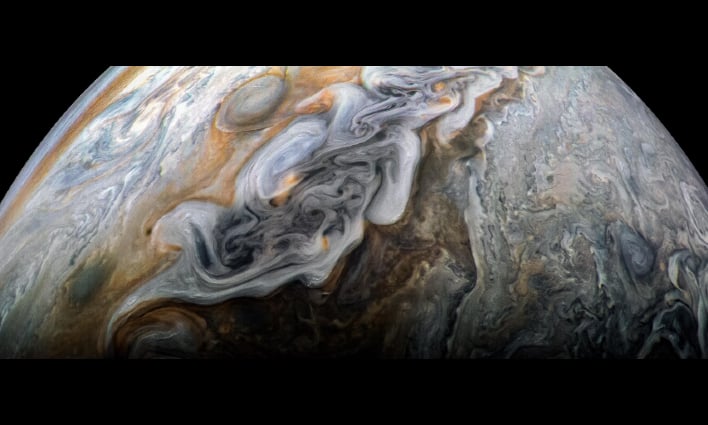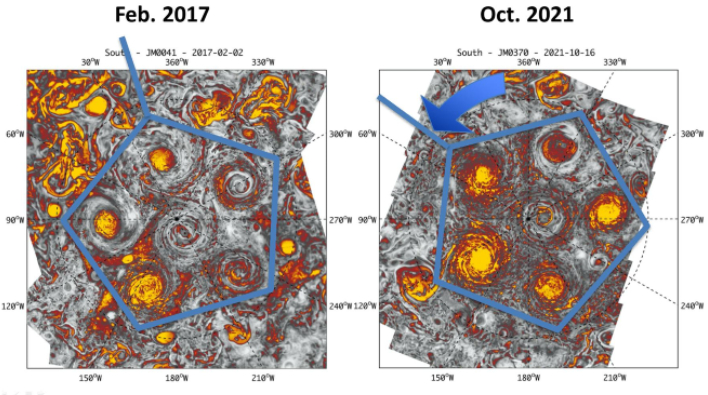NASA's Stunning Juno Images Reveal Jupiter's Hurricane-Like Spiral Wind Patterns
Jupiter is known for its Great Red Spot, an anticyclone large enough for Earth to fit inside. Recent data has suggested that the cyclones on Jupiter are warmer on top, with lower atmospheric densities, while being colder on the bottom, with higher densities. Anticyclones, such as the Great Red Spot, are colder at the top and warmer at the bottom. However, it is an image taken of the planet's north pole that has the attention of scientists at the moment.

In particular, scientists are wanting to better understand the vortices' shapes, sizes, and colors. As an example, cyclones which spin counter-clockwise in the northern hemisphere and clockwise in the southern, and anti-cyclones which spin clockwise in the northern and counter-clockwise in the southern hemisphere, showcase very different colors and shapes.

One exciting thing to note is that anyone can help with this research. A NASA citizen science project, Jovian Vortex Hunter, is seeking volunteers from the public to spot and help categorize vortices and other atmospheric phenomena. There is no specialized training or software needed, and can be done by anyone who has access to a cellphone or laptop. If you would like to partake in this research, you can find out more by visiting Zooniverse.org.
Top Image Credit: NASA/JPL

